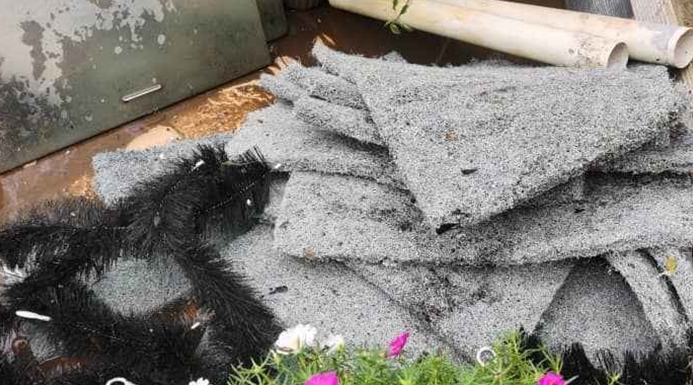Most owners of Fish Pond are aware of the importance that good quality water plays in a pond habitat. Not knowing how to get or keep water quality can sometimes prove challenging. Your water may be clear, but your fish might be acting differently, which can signify that something might be a little off in your pond’s water. With a little education and experience, you’ll become better equipped to solve whatever pond water issues you might have. For starters, follow 7 ways below to help keep your pond water clean! 1) Choosing the Right Pond Location Ok, this one could be a bit difficult to address if your pond is already in the ground, but your choice of location could help to keep your pond clearer. If possible, don’t place your pond under deciduous trees, which will clog up the pond with leaves. If you get a lot of leaves falling into the pond, you should be scooping them out every couple of days before they get a chance to rot. When deciding where to put your pond, consider that it is best located in some direct sun and some shade. Wildlife creatures within the pond enjoy the warmth of the sun, and this is best for nesting frogs and their spawn. If you are considering an ornamental fish pond, however, you can keep it clearer by locating it mostly out of the direct sun. Locating the pond in the sun will encourage algae growth, but healthy algae growth is ok within a pond environment. The animals like to feed on it and the algae will help to put oxygen into the water and balance water nitrate levels as well. 2) Maintain a Healthy Fish Population If you have more than 10” of fish for every 100 gallons of water, your pond is likely over-populated. Excessive fish waste can cause an imbalance in pond water. Consider finding some of them a new home. Many pond retailers and contractors will accept your fish. 3) Do Not Over-feed When you feed fish more than they can eat, the uneaten food is left to decay in the pond. Be careful not to feed your fish more than once per day, and no more than they can eat in 2 to 3 minutes. Choose a quality fish food – preferably one that floats as opposed to sinking to the bottom of the pond if left uneaten. 4) Create a Proper Balance of Plants Same with fishes, do not have too many plants in your pond which leads to overcrowding. In the day, too many plants obstruct sunlight from entering your pond and at night. In the night, over-population of plants cause oxygen deficiencies as they give off carbon dioxide. 5) Choosing The Right Size Pump For Your Pond Choosing the right filter for your pond is essential for keeping the water clear and clean. You need to select a pump and filtration system for the volume of water in the pond, otherwise, you will be overburdening your pumps. As an estimate, your pump should circulate the equivalent of the whole of the pond’s water at least once every hour. You should know how much water is in your pond and check the limitations of the pump before buying it. Your filter should also match the volume of water in the pond. If you have an ornamental fish pond you will absolutely need a filter to look after the health of your fish. If you have a wildlife pond a filter is not as essential. 6) Clean Your Pond from Debris Your pond skimmer will remove most of the debris from the surface of your pond, but you can also use a pond net to skim leaves and small sticks before they have a chance to descend to the pond’s bottom where they’ll decay. Decaying debris, combined with fish waste and leftover fish food, can cause ammonia levels to spike in your pond. 7) Keep Your Pond Cool When pond water exceeds 24 °C Celsius, it has a difficult time retaining acceptable levels of dissolved oxygen, which is critical for the health of your fish. This is why it’s important to have the surface of your pond shaded by aquatic plants to help keep pond water cool. Fish need oxygen to survive. If you see them at the pond’s surface gasping for air, add an aerator to help them during times of extreme heat. Book Your Cleaning Service today with Aquacare. Click Here







